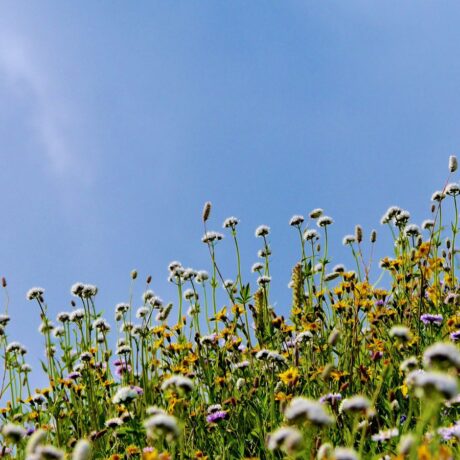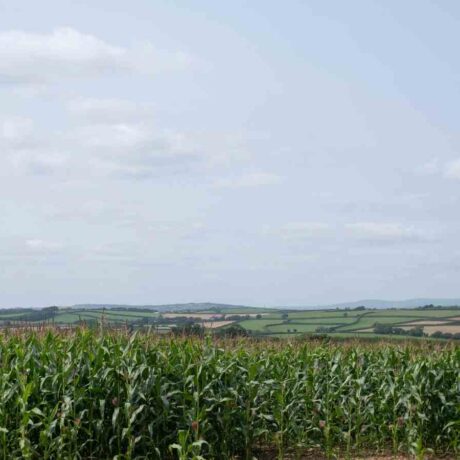GLYPHOSATE RESISTANCE REPORTED IN THE UK (August update)
Dr Alex Setchfield
Aug, 22 2025UPDATE AS OF 22/08/25:
Following the news of glyphosate resistance reported in the UK earlier this year in January, 10 more Italian rye-grass samples from 8 farms were tested by ADAS. 3 of these farms have shown high risk of resistance. Offspring from these populations will now undergo further testing to confirm if they are resistant. ADAS will continue to screen more populations in Spring 2026, supported by Bayer Crop Science.
CONTENTS
- Introduction
- Glyphosate Usage
- Glyphosate Resistance
- Guidelines for Minimising the Risk of Glyphosate Resistance
- Practical Recommendations
Glyphosate is one of the most frequently used herbicides in the UK across all crop production systems, including annual and perennial crops, and non-cropped areas. It is a non-selective foliar-acting herbicide with no soil residual activity, and is used to control weeds post-emergence. In cereal crop production, glyphosate is used regularly to control a range of weeds as part of stale seed bed technique pre-drilling.
The stale seed bed technique allows newly emerged grassweeds to be removed prior to crop drilling, which reduces the pressure on in-crop herbicide programmes. As such, it is a vital component of weed management control regimes, with glyphosate applied when target weeds are at their very early growth stages to improve the likelihood of successful control. Over the past 30 years, there has been a significant and sustained increase in the use of glyphosate on cereal crops in the UK (Figure 1), and there are now many reports of multiple glyphosate applications pre-drilling between every crop in the rotation, year-on-year. Although the resistance risk from a single application is typically low, multiple glyphosate applications between every crop in the rotation is likely to contribute to the development of resistant weed populations, and therefore may not be a sustainable management strategy in the long-term (WRAG, 2021).

Figure 1. Glyphosate use on UK cereal crops. Data shows the total UK cereal crop area treated with glyphosate (1990-2020). Data sourced from Pesticide Usage Survey (2022).
Several factors have contributed to sustained increases in glyphosate use, including its efficacy across a broad range of weeds, and its cost effectiveness. In addition, in recent years, regenerative agriculture techniques have become more commonplace across the UK as part of the Agricultural Transition Plan and schemes within it, such as the Sustainable Farming Incentive (SFI), with farmers and growers altering agricultural practices to conserve and rehabilitate the environment, whilst continuing to produce food. One of the core components of regenerative agricultural practice is limiting disturbance to the soil to protect and improve soil structure, build soil organic matter, and reduce carbon release into the atmosphere. Glyphosate use facilitates the adoption of such practices by minimising the need for weed (and cover crop) control by soil cultivation or disturbance (e.g. ploughing, tilling) (Neve et al., 2024). As such, increased adoption of regenerative agriculture practices across the UK may have, in part, driven recent increases in glyphosate use, though not in isolation (Pullman, 2023).
Over the last 20 years, there has been a rapid increase in herbicide resistant grassweeds within arable cropping systems – particularly black grass (Hull et al., 2014), whilst Italian ryegrass is emerging as a significant concern. This is due to various factors, but has been driven primarily by a reduction in the availability of different herbicide products as a result of regulatory policy changes, a lack of new herbicides on the market, and consequent over reliance on a limited group of modes of action.
Recent patterns of glyphosate use (Figure 1) have led to a heightened risk of glyphosate resistance emerging in arable cropping systems, and as of December 2024, reduced sensitivity had been detected in Italian ryegrass and sterile brome populations (ADAS, 2024). Worldwide, there have been many cases of glyphosate resistance reported, which have demonstrated that reliance on the use of glyphosate alone (without mitigation measures, e.g. cultivation) is a key driver for the development of resistance.
The Weed Resistance Action Group (WRAG) reported on 10th January 2025 the discovery of the first field population of any weed to have glyphosate resistance in the UK. You can read the story here.
GUIDELINES FOR MINIMISING THE RISK OF GLYPHOSATE RESISTANCE
Various actions can be taken to minimise the risk of glyphosate resistance emerging in arable cropping systems. The WRAG produces guidance on pesticide resistance issues to help protect crops and the long-term efficacy of herbicides. It splits its guidance on glyphosate use into four key pillars (Figure 2):
- Prevent survivors
- Maximise efficacy
- Use alternatives
- Monitor success

Figure 2. WRAG guidelines for reducing the risk of glyphosate resistance in the UK.
WRAG also summarises various risk factors for glyphosate resistance (Table 1).
Table 1. WRAG summary of risk factors for glyphosate resistance in the UK.

As summarised in Figure 2 and Table 1, ensuring diversity in glyphosate control of weed populations is fundamental to its stewardship. This can be achieved through non-chemical control techniques such as cultivation, or judicious crop rotation in regenerative agricultural systems. Minimising the number of glyphosate applications is also vital, whilst maximising the efficacy of those applications can be achieved by spraying at the correct dose rate, target weed growth stage, and in suitable environmental conditions (e.g. 15-25°C, and at least 6 hours before rainfall).
To minimise the risk of glyphosate resistance emerging in arable cropping systems, it is vital to work with your agronomist to implement the following WRAG guidelines:
- Prevent Survivors: Avoid repeat applications to surviving plants.
- Maximise Efficacy: Use the right dose for the target weed on newly emerged plants, and use the manufacturer’s recommended dose rate. Reduced rates that allow more surviving plants may encourage the development of resistance.
- Use Alternatives: Ensure glyphosate use is supplemented by sufficient non-chemical controls (e.g. cultivation) to kill surviving plants, and use herbicides of different modes of action (in sequence or mixture) as recommended.
- Monitor Success: Remove surviving plants to prevent seed spread, and report suspected survivors to your agronomist, crop protection adviser, and / or manufacturer of the glyphosate product applied for resistance testing.
REFERENCES
ADAS (2024) Weed management and resistance. AHDB Agronomy Conference 2024.
Hull et al. (2014) Current status of herbicide-resistant weeds in the UK. Aspects of Applied Biology, 127, Crop Production in Southern Britain: Precision Decisions for Profitable Cropping, 261-272.
Neve et al. (2024) Current and future glyphosate use in European agriculture. Weed Research, 64: 181–196.
Pullman (2023) Glyphosate use rises in UK farming while overall pesticide use falls. Wicked Leeks / Riverford Organic Farmers.
Weed Resistance Action Group (2021) Guidelines for minimising the risk of glyphosate resistance in the UK.






